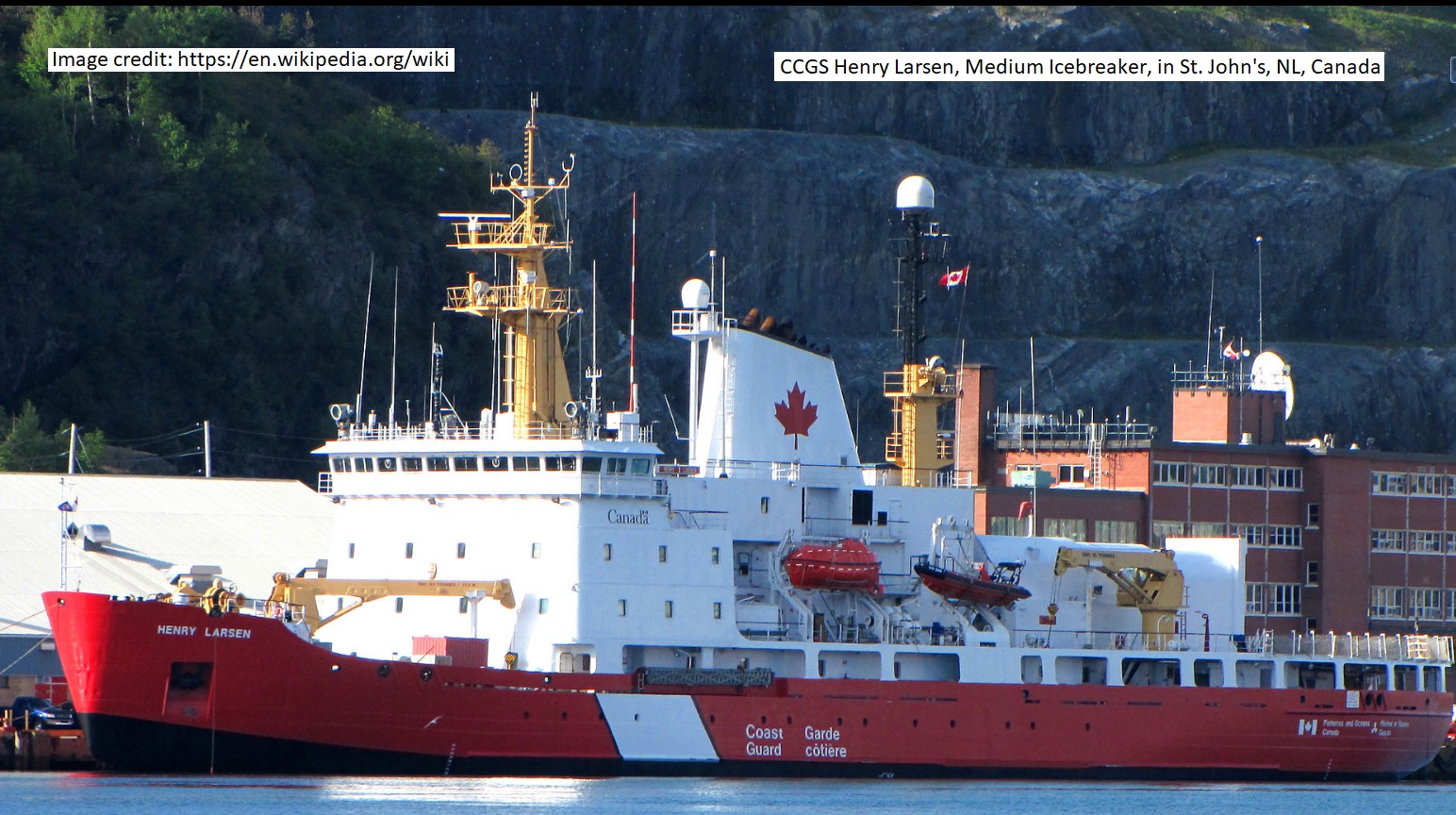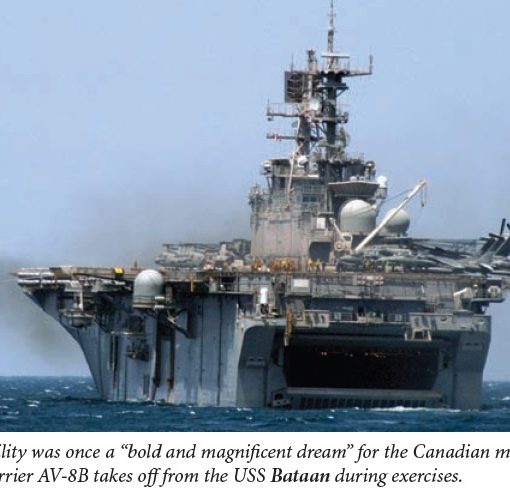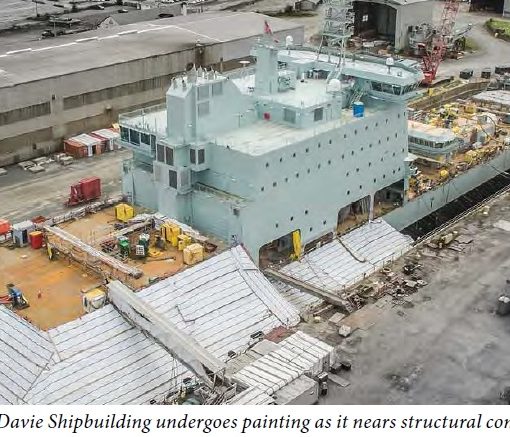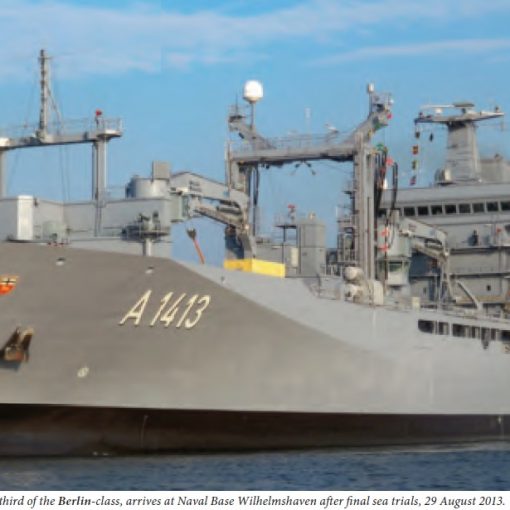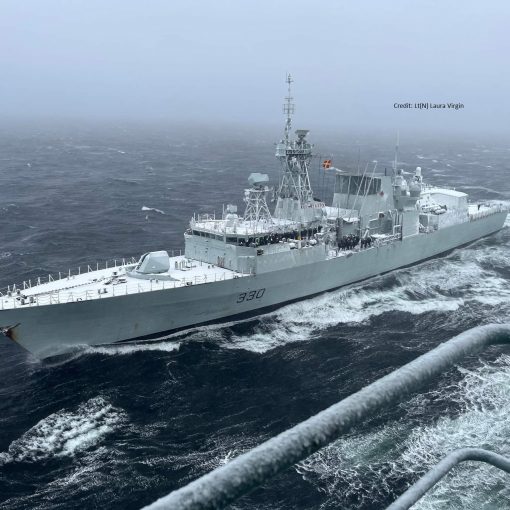There was a lot of uproar when CBC’s Terry Milewski published a report (“Ottawa was warned about Arctic patrol ships’ high price”) that led with this statement: “Two days before signing a contract to begin work on a $3-billion shipbuilding project, the federal government was warned by its own advisers that the contract was overpriced — but signed it anyway.” The NDP’s defence critic, Jack Harris, accused the government of “failing to protect the taxpayer’s interests” and the Liberal’s defence critic, Joyce Murray, likened the exercise to “The Three Stooges trying to buy a car.” I have been studying the report for several weeks now and find that there is a lot of selective use of information from the report and some outright misinformation being mixed in with it to generate the ‘media buzz’.
The Third Party Report by International Marine Consultants (IMC) is not about the price of building the Arctic and Offshore Patrol Ships. It is only about the cost of the first two stages of the seven-stage Preliminary Design Contract worth $9.3M that was signed with the government back in July of 2012. On second page of the IMC report, it is stated very clearly that:
The objective of the Definition Phase is to engage ISI [Irving Shipbuilding Inc.] to complete all the design and engineering, including drawings, 3-D modelling and simulations and supporting activities, such that the shipyard is ready to begin to ‘cut steel’. To advance the work, ISI had submitted an AOPS Definition Phase Proposal on November 27th 2012, breaking down the work into seven specific Tasks.
IMC was hired to comment only on the first two tasks of this definition proposal, which are:
- Task 1 - Project Management; and
- Task 2 - Engineering Design Phase I.
IMC was asked to provide their professional opinion on three aspects of the task, but were not limited to them:
- Completeness of the activities and time estimate to complete the Task;
- Reasonableness of the estimated level of effort to complete the Task; and
- Task Risks.
Here, quoted directly from the report, are the overall findings of IMC:
As a general comment, Irving Shipbuilding Inc. have presented a comprehensive, high quality proposal that, for the most part, accurately describes the work associated with Task 1 and Task 2 of the Contract Definition Phase of this important project.
The amount of resources being allocated and associated level of effort proposed should ensure that a near-optimum Build Strategy can be developed for the Implementation Phase of the Project which, in turn, should allow the material procurement and actual ship construction to run smoothly using the minimal number of man-hours and full utilization of the available infrastructure. Hopefully this will enable all eight of the AOPS to be built and commissioned into service in a timely manner.
Far from a fiasco or a comedy of errors, the report says that the proposal is comprehensive, of high quality, with the resources allocated allowing a near-optimum plan that will run smoothly and efficiently. The report does say that they “do have a continuing concern about the costs associated with the Definition Phase Contract which are further addressed later in this letter.”
The IMC report voices concerns over the cost of man-hours allocated to the first two tasks. This is attributed to three factors:
(1) A top-down approach to estimating man-hour requirements, rather than bottom-up;
(2) A 30-month project definition period, which they consider too long; and
(3) High costs for command and control and propulsion plant systems integration.
ISI used construction costs for ships built at their shipyards and ships built at the Bath Iron Works, a company that Irving drew extensive experience and support from in the construction of the Halifax-class frigates. They used this information to establish what is known as a Work Breakdown Structure (WBS). Although the Statement of Work was to produce the WBS to Level 6, it was only done to Level 5. Despite this shortcoming, the IMC report finds “the WBS structure proposed is considered both appropriate and sufficient for this vessel and should be acceptable.” IMC also found that the major costs “are documented in detail and seem reasonable, except for a couple of items that are identified in the general comments section as needing further review.” These observations, and not the concerns, are the major finding of the report.
With this general approval of ISI’s efforts noted, what are we to make of the findings on the three factors, listed above? Here are my thoughts on each of them:
(1) The AOPS design is a hybridized ship that must function in both ice-covered and open-water seas. No ship like it has ever been built in Canada. In fact, only three other ships resembling it have ever been built in the world before. These are the two Rasmussen-class ships for the Royal Danish Navy and the one Svalbard-class ship for the Norwegian Coast Guard. This is a very small and select sample from which to draw information. To my knowledge, ISI has never built an icebreaker and they have obviously never built an icebreaker-patrol hybrid ship. I expect that the same is true for Bath Iron Works. Therefore, there is no Canadian historical data from which to build a bottom-up cost estimate.
(2) The 30-month project definition phase is set to end in the summer of 2015. This coincides with the end of the projected modernization at Irving’s shipyard in Halifax and metal fabrication site in Dartmouth. No construction can begin on the first AOPS before that work is completed. To rush the Definition Phase Contract to completion to meet an earlier deadline is both artificial and impractical. From the perspective of risk, which is one of the three opinions IMC was asked to provide, it makes far greater sense to take the time available to conduct the most thorough assessment possible before undertaking the construction of a completely new type and class of ship in North America.
(3) The high cost of systems integration is due to the history of Irving Shipbuilding since the Halifax-class was completed. Since that time and especially since the move the Halifax, the shipyard has been a repair and refit yard, with new construction as a small and specialized sideline operation. The change in culture, operating practices and human skills development required to become a world-class shipbuilder are daunting. In the short term, the company will be reliant on contracted expertise but it should also ensure that knowledge transfer is addressed in all of the agreements it signs with service providers. In the medium term, Irving may be able to hire on additional expertise, but only if they can demonstrate that the prospects in Halifax warrant a professional moving from a secure post to a new one here. In the long term, local education systems and institutions should engage in resurrecting professional and trade courses. An advanced centre of excellence that can work on all manner of maritime security and marine industrial issues in a collaborative environment should also be established. To be a builder of world-class ships demands a major commitment to research, analysis and innovation. Many shipyards in many countries have foundered because they cut back on intellectual pursuits to protect their ‘core’ activities as business dried up. Building yesterday’s ships for the demands of tomorrow’s environment is a sure plan for failure. Irving will have to innovate to be successful.
The IMC report compares the construction of the AOPS to the icebreaker CCGS Henry Larsen by Versatile Pacific Shipyards in Vancouver for the Canadian Coast Guard by in the 1980s, and the recent construction of the Alaska Region Research Vessel (ARRV) by Marinette Marine Corporation in Wisconsin. I do not think that either of these ships are appropriate comparisons. Here are my reasons why:
CCGS Henry Larsen was built in the middle of a major period of construction of ships for the CCG in the 1970s and 80s. Many of them were built by Versatile Pacific and all of them had a remarkable degree of similarity that is evident to the casual observer. The Versatile Pacific yard had already built several ships and had incorporated many of the lessons learned during construction into their standard practices. This is not the case here. By the time ISI reaches the middle of AOPS program, it might be possible to draw some general points of comparison, but given the difference between a military arctic and offshore patrol ship and a civil icebreaker, they should be treated with extreme caution.
The ARRV was built in a major shipyard that is “Part of the Fincantieri Marine Group, a subsidiary of Fincantieri, one of Europe’s largest shipbuilders with a history dating back 200 years and a track record of producing more than 7,000 ships.” Its facilities are state-of-the-art and they are in continuous production of a number of different ship types. Among them is the Littoral Combat Ship for the USN. ISI is in the process of upgrading its facilities to the point that they could be comparable in some degree to those of Marinette Marine, however, they are a very long way away from being comparable in any other sense. The aspirational goal of ISI may be to reach that state of affairs by the end of the first round of NSPS contracts, but they have a long way to go. Additionally, the ARRV is a civil vessel with many major differences in design and purpose from the AOPS. A comparison between the two types of ships is so rudimentary that it is of little value.
I do not agree with the political assessments that the Definition Phase Contract is exorbitantly expensive or a ‘boondoggle’ in any sense. When viewed in context, the contract with Irving Shipbuilding Inc. seems both “comprehensive” and “accurate,” just as the IMC reports says that it is.

